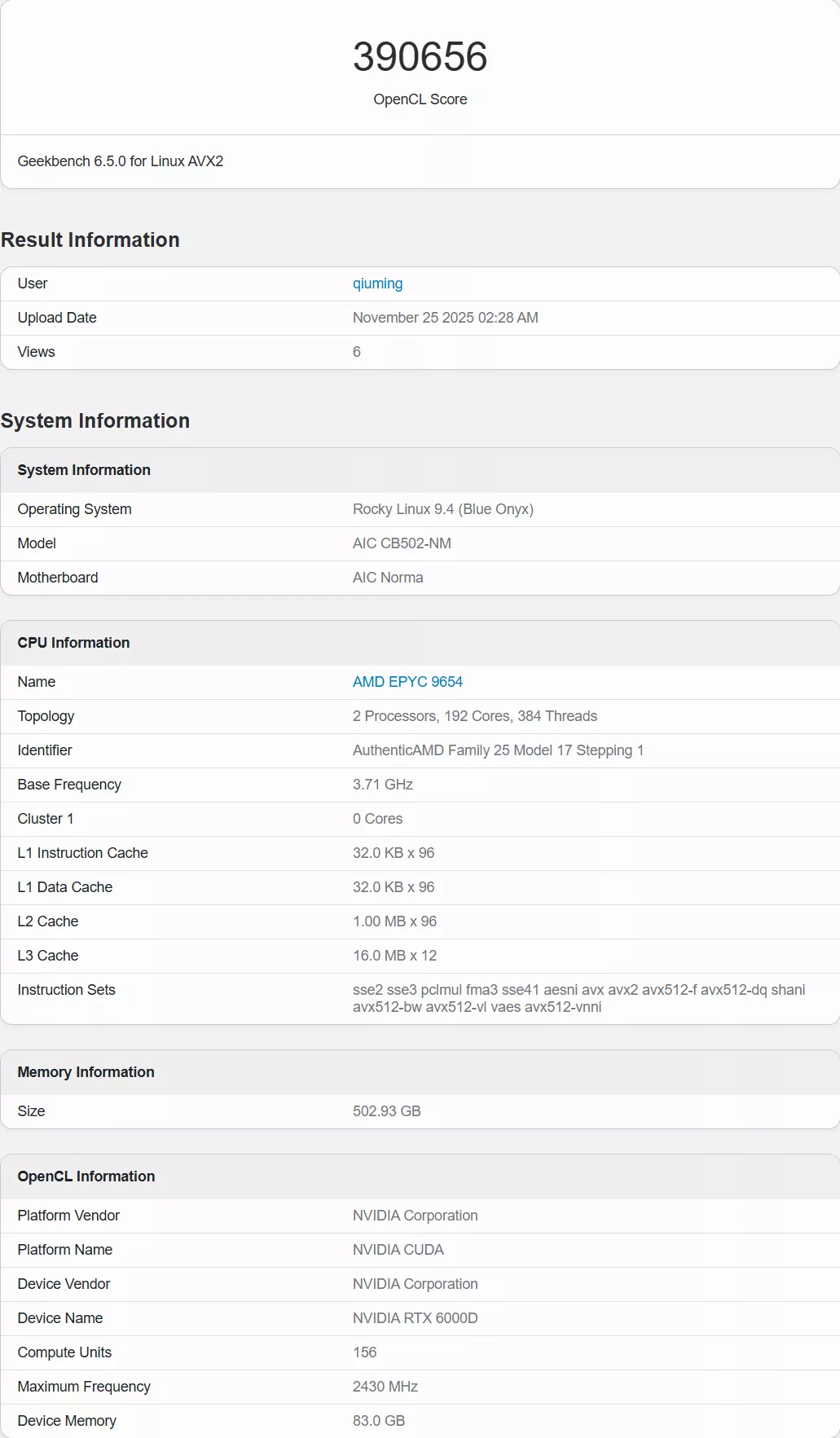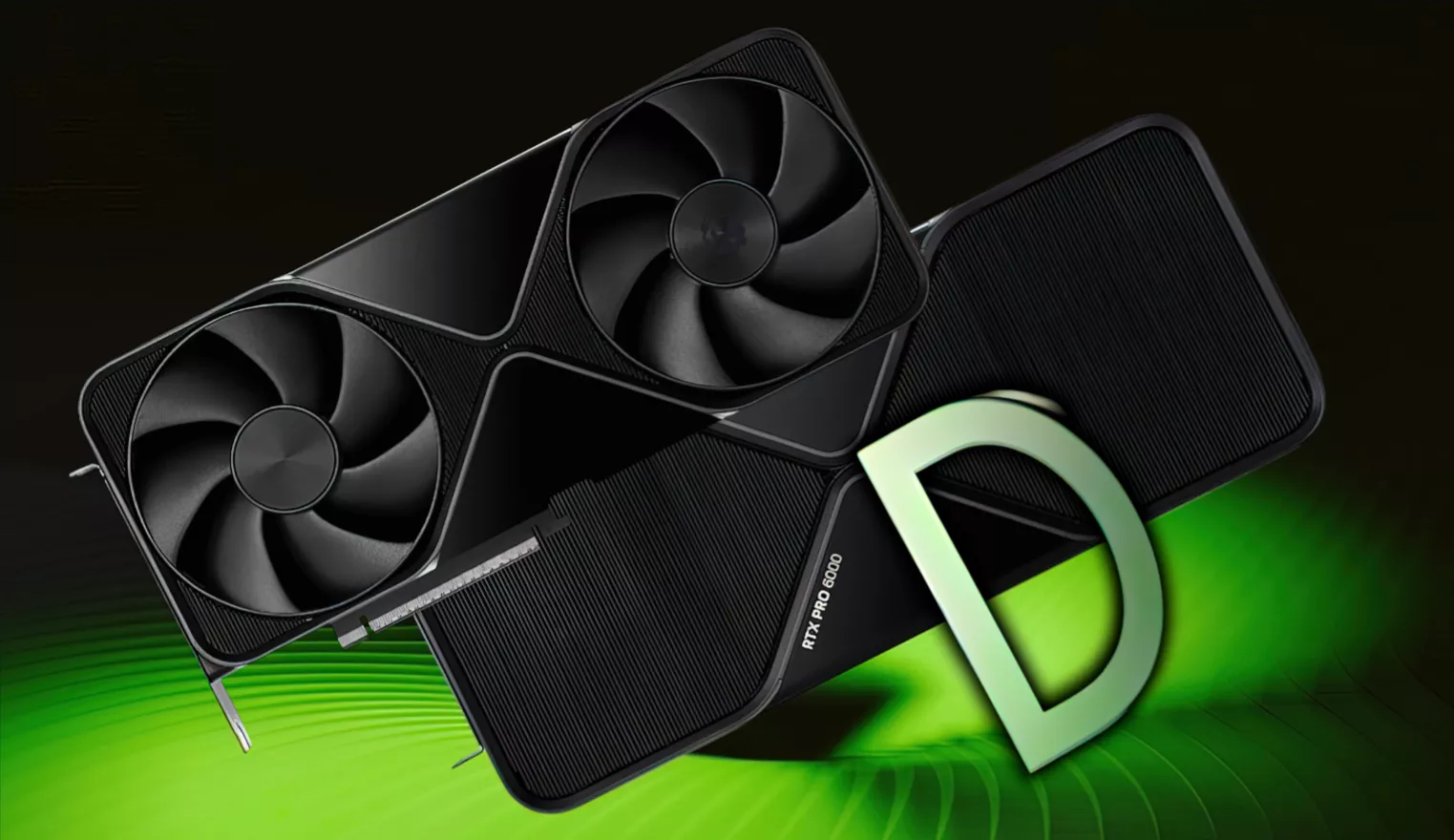NVIDIA’s latest move to navigate the U.S. restrictions on AI hardware exports to China has resulted in the creation of the RTX 6000D Blackwell GPU. This China-exclusive graphics card has been put to the test, revealing a more scaled-down version compared to its global counterparts. The adjustments made to this GPU highlight NVIDIA’s strategy to maintain a presence in the Chinese market despite external limitations.
Specifications and Design of the RTX 6000D Blackwell GPU
Introduced as a response to stringent export controls, the RTX 6000D Blackwell is part of NVIDIA’s strategic offerings for China. Unlike the globally available NVIDIA RTX PRO 6000, which comes in various configurations including a standard, Max-Q, and server variant, the 6000D is notably reduced in capabilities. This GPU features 156 SMs or 19,968 CUDA cores, a 17% decrease compared to the 188 SMs or 24,064 CUDA cores of the original model. Additionally, this variant is equipped with approximately 83-84 GB of VRAM, less than the 96 GB of the standard version, likely due to a 448-bit bus interface as opposed to a 512-bit bus.

Compared to the standard RTX PRO 6000 models, which have clock speeds exceeding 2600 MHz, the 6000D operates at a reduced clock speed of 2430 MHz. Although the exact TDP is unspecified, the performance is evident from benchmark results.
Performance and Market Reception
The RTX 6000D recorded an OpenCL benchmark score of 390,656 on Geekbench 6, a figure that falls short of the 450-500K achieved by the full-spec models. This testing was carried out on a system powered by AMD’s EPYC 9654 192-core CPUs. The GPU’s lukewarm performance has not resonated well in China’s AI market, as the focus shifts increasingly towards domestic AI chip solutions. Reports suggest China is intensifying its development of homegrown AI chips and acquiring others through unconventional means, posing challenges for NVIDIA’s newest offering.
| Graphics Card | GPU Cores | AI TOPS | FP32 / RT Compute | VRAM | Memory Bus / BW | Form Factor | TDP |
|---|---|---|---|---|---|---|---|
| RTX PRO 6000 | 24064 (GB202) | 4000 | 125 / 380 | 96 GB GDDR7 | 512-bit / 1792 GB/s | Dual-Slot / Extended | 600W |
| RTX PRO 6000 Max-Q | 24064 (GB202) | 3511 | 110 / 333 | 96 GB GDDR7 | 512-bit / 1792 GB/s | Dual-Slot / Full | 300W |
| RTX PRO 6000D | 19968 (GB202) | TBD | TBD | 84 GB GDDR7 | 448-bit / 1568 GB/s | Dual-Slot / Full | TBD |
| RTX PRO 5000 | 14080 (GB202) | 2064 | 65 / 196 | 48-72 GB GDDR7 | 384-bit / 1344 GB/s | Dual-Slot / Full | 300W |
| RTX PRO 4500 | 10496 (GB203) | 1687 | 50 / TBD | 32 GB GDDR7 | 256-bit / 896 GB/s | Dual-Slot / Full | 200W |
| RTX PRO 4000 | 8960 (GB203) | 1178 | 37 / 112 | 24 GB GDDR7 | 192-bit / 672 GB/s | Single-Slot / Full | 140W |
| RTX PRO 4000 SFF | 8960 (GB203) | 770 | 24 / 73 | 24 GB GDDR7 | 192-bit / 432 GB/s | Dual-Slot / Half | 70W |
| RTX PRO 2000 | 4352 (GB206) | 545 | 17 / 52 | 16 GB GDDR7 | 128-bit / 288 GB/s | Dual-Slot | 70W |
